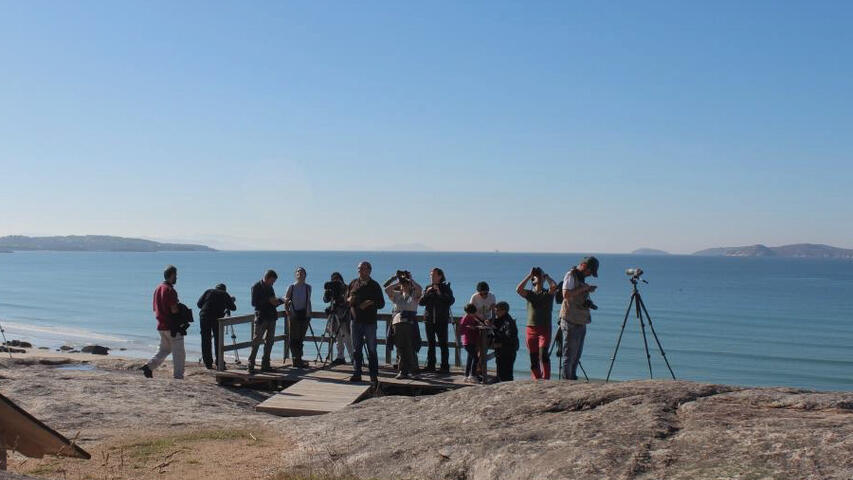Birding: great enclaves of As Rías Baixas
Do you know how to identify a heron, a scoter or a group of grebes? The province of Pontevedra is home to hundreds of bird species and offers beautiful scenery. Design your birding route
Cormorants, gannets, turtledoves, herons, scoters or short-toed eagles. The variety of species and the beauty of the landscapes in which they nest make As Rías Baixas a privileged enclave for birdwatching. If you like ornithology , take note because the province of Pontevedra offers you a good number of alternatives to enjoy them in their natural habitat.
Cíes is home to the largest colony of yellow-legged gulls in the world and has abundant populations of shag.
Start your route at the Umia-O Grove Intertidal Complex, an Area of Special Community Interest that in recent years has become a national reference point for spotting wintering waterbirds, hosting around 18,000 specimens.

The Parque de las Islas Atlánticas is another outstanding area for birding enthusiasts, validated by the main ornithological tourism sector's main standards. Cíes is home to the largest colony of yellow-legged gulls in the world and serves as a refuge for abundant populations of shags, gannets, turtle doves and turtle doves.
In the south of the province of Pontevedra, stop off at the Miño estuary, which offers ideal conditions for migratory birds and waders such as godwits, sandpipers, sandpipers and lapwings. With a bit of luck you can also spot herons, grebes, grebes, grebes, scoters and even birds of prey such as the hen harrier, the common moorhen or the osprey.
Atlantic Islands, a unique environment
The Atlantic Islands Park is an international reference for birdwatching. Its combination of marshes, beaches and cliffs, perfect for breeding, make its islands a refuge for dozens of unique species. Its natural wealth and bird fauna attract thousands of visitors every year. In the archipelago there are more than twenty identified and registered species, 1,100 pairs of cormorants and more than 15,000 pairs of yellow-legged gulls, which predominate in Cíes and Sálvora.

Ornithology enthusiasts will get to know the province in depth as they travel to the Brañas de Xestoso, in the surroundings of the O Candán mountain range, as a multitude of protected species can be seen in the vicinity of the Sacra de Olives lagoon . Cerillos and montesinos, skylarks, thrushes, wheatears and migratory species from Africa can be found here.
The list of wetlands and marshes for bird watching is very extensive in As Rías Baixas and includes the Gándaras de Budiño (Porriño), the Alba marshes on the banks of the Lérez (Pontevedra), the Monte Aloia Interpretation Centre (Tui), the wetlands of A Ramallosa or Cotorredondo, which houses a bird recovery centre.
You can't miss it...
- Umia-O Grove intertidal complex
- Miño Estuary
- Brañas de Xestoso
- Monte Faro viewpoint in Cíes


